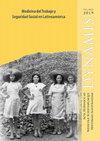Introduction of the modern physician and the debate on medical professionalism in the 19thCentury Ottoman Empire
IF 0.1
4区 哲学
Q3 HISTORY & PHILOSOPHY OF SCIENCE
引用次数: 0
Abstract
This article focuses on how boundaries were created between modern physicians and traditional healers when the modern medical profession was established in the 19th century Ottoman Empire, based on documents from the Ottoman Archives of the Prime Minister’s Office. In the Tanzimat period (1839-1876), the Ottoman elites focused on modifying the education system with the aim of modernizing the institutions of the Empire, and medical education was one of their priorities. The Imperial School of Medicine was inaugurated in 1839, and a series of regulations simultaneously established that only graduates from the modern schools had the right to practice medicine. These regulations detailed the content of the education, the stages to be completed in order to graduate, and the regulation of professional praxis postgraduation. These regulations drew a boundary between the professional and the layman. Their aim was to achieve the domination of certified professionals over the health field, expelling non-professionals once enough staff became available. The article examines the rivalry between modern and traditional physicians and the diverse strategies employed to distinguish between modern and lay practitioners and to deny legitimacy for some medical practices. The panorama was further complicated by the ethnicity factor in the context of unrest in the Empire at that time. Other questions addressed in this text include: What discourses and legal regulations played a role in forming the boundaries between customary and modern educational processes? How did the Ottoman elites seek to control the population through medicine and health policies?现代医师介绍与19世纪奥斯曼帝国医疗专业主义之争
本文以奥斯曼帝国总理办公室的档案文件为基础,重点介绍了19世纪奥斯曼帝国建立现代医学职业时,现代医生和传统治疗师之间的界限是如何划定的。在Tanzimat时期(1839-1876),奥斯曼帝国的精英们专注于修改教育系统,以实现帝国机构的现代化,医学教育是他们的优先事项之一。1839年,帝国医学院成立,同时制定了一系列法规,规定只有现代学校的毕业生才有权行医。这些规定详细规定了教育内容、毕业应完成的阶段,以及毕业后的专业实践规定。这些规定在专业人员和外行之间划出了界限。他们的目的是实现认证专业人员对保健领域的统治,一旦有足够的工作人员,就驱逐非专业人员。文章探讨了现代和传统医生之间的竞争和不同的策略,采用区分现代和非专业的从业者和否认合法性的一些医疗实践。在当时帝国动荡的背景下,种族因素使情况进一步复杂化。本文讨论的其他问题包括:什么话语和法律规定在形成习惯和现代教育过程之间的界限方面发挥了作用?奥斯曼帝国的精英们是如何通过医药和卫生政策来控制人口的?
本文章由计算机程序翻译,如有差异,请以英文原文为准。
求助全文
约1分钟内获得全文
求助全文
来源期刊

Dynamis
社会科学-科学史与科学哲学
CiteScore
0.30
自引率
0.00%
发文量
0
审稿时长
>12 weeks
期刊介绍:
DYNAMIS is an international journal devoted to the history of medicine, health and science, founded in 1981, that pays special attention to novel and interdisciplinary historiographic perspectives. It offers original, double peer-reviewed research studies (articles, notes or documents) and reviews in languages of the European Union.
 求助内容:
求助内容: 应助结果提醒方式:
应助结果提醒方式:


